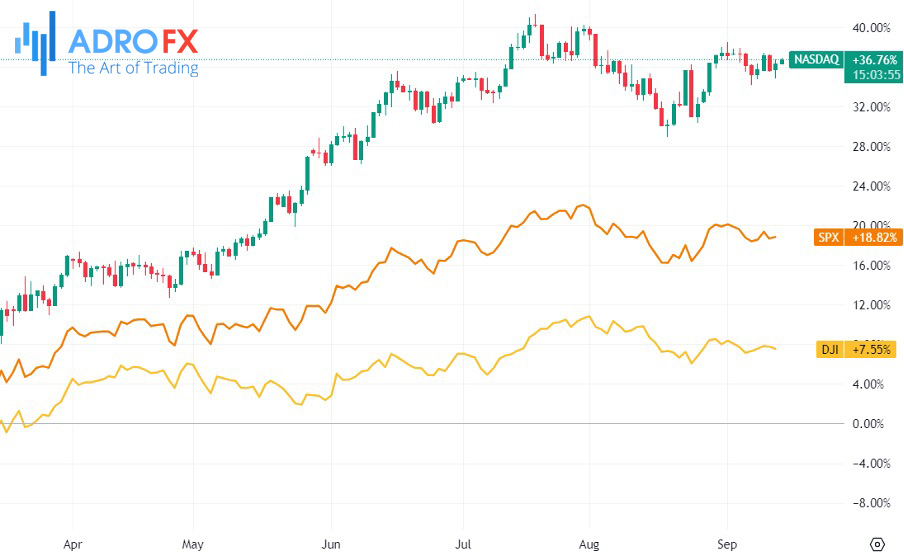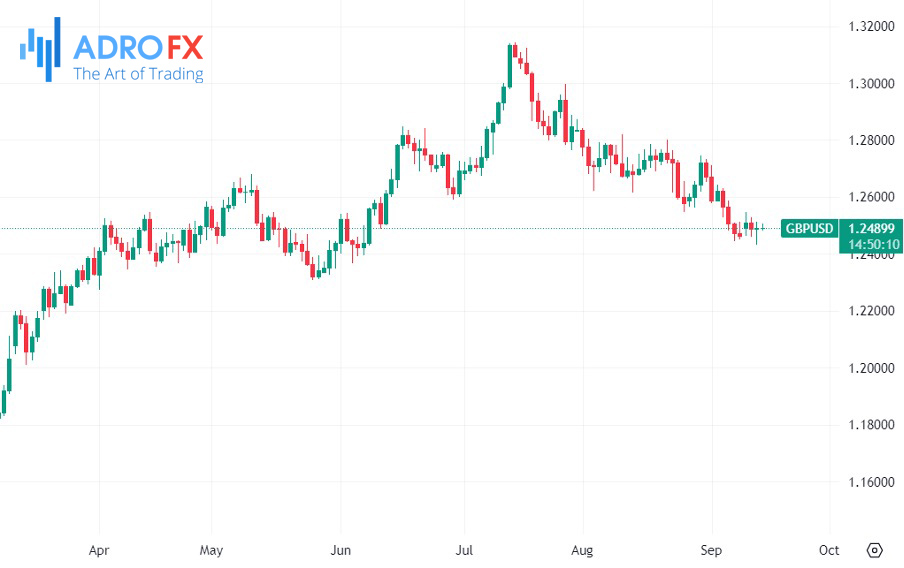Financial Markets Navigate Volatility Amid Economic Data and Central Bank Decisions | Daily Market Analysis

Key events:
- Eurozone - Deposit Facility Rate (Sep)
- Eurozone - ECB Interest Rate Decision (Sep)
- USA - Core Retail Sales (MoM) (Aug)
- USA - Initial Jobless Claims
- USA - PPI (MoM) (Aug)
- USA - Retail Sales (MoM) (Aug)
- Eurozone - ECB Press Conference
In the overnight trading hours of Wednesday, US stock futures maintained their stability, mirroring a session characterized by a blend of performances among the key benchmark indices. Traders grappled with the implications of recent inflation figures, elevated yields, and a waning enthusiasm for tech stocks.
The Dow Jones Futures remained largely unchanged, while both the S&P 500 Futures and Nasdaq 100 Futures saw modest gains of 0.1% each.

In the Asian trading session on Thursday, gold prices exhibited minimal movement, stabilizing near their three-week lows, while grappling with pressure from a strengthening US dollar, driven by data revealing a more substantial-than-anticipated surge in US inflation.
Despite Wednesday's robust US consumer inflation figures, gold managed to maintain its position, as market sentiment leaned towards the expectation that the Federal Reserve would maintain interest rates at their current levels during the upcoming week.

However, the uncertainty persisted regarding whether gold prices could sustain the $1,900 per ounce threshold, given the likelihood of prolonged higher US interest rates. Concurrently, the US dollar remained resilient, hovering below its nearly six-month peak, thereby restraining significant upward movements in the price of gold.
The reduced likelihood of a US economic downturn weighed on the safe-haven demand for gold, as recent data indicated the ongoing resilience of the world's largest economy.
Later on Thursday, the market's attention is poised to shift towards US producer inflation and retail sales data, which are anticipated to further underscore the economic resilience. The backdrop of a robust consumer inflation reading arrives just a week ahead of the Federal Reserve meeting, where expectations are widespread that the central bank will maintain the status quo with regard to interest rates. However, it's worth noting that the Fed might present a more hawkish outlook, particularly in light of the resurgence in inflation.
Market participants also anticipate that the Fed will keep interest rates at levels not seen in over two decades until at least mid-2024, presenting a subdued outlook for gold. The yellow metal has weathered a challenging year due to the surge in interest rates, which raise the opportunity cost of investing in non-yielding assets like gold, thus limiting its appeal in comparison to assets such as the US dollar or Treasury bonds.
Meanwhile, European shares experienced a decline in Wednesday's trading session, with the industrial sector leading the downturn. BP (NYSE: BP) shares also suffered losses following the abrupt departure of the oil firm's CEO. Investors remained on alert for the European Central Bank's forthcoming monetary policy decision, scheduled for Thursday.

The European Central Bank is expected to set interest rates later in the day, with many traders believing that we are either at or near the peak. A potential 25 basis point increase would elevate the rate on bank deposits to 4%, marking the highest level since the inception of the euro in 1999. However, the market has already priced in these expectations, which may introduce a downside risk to the currency. If a rate hike does not materialize, the euro could weaken. Conversely, if the rate increase occurs, markets are likely to assume it as the last in the series, potentially prompting selling.
In the quiet Asian trading session, the euro stabilized at $1.0742.

Notwithstanding inflation remaining above policymakers' 2% target, Europe's economic momentum is decelerating. Lending growth is sluggish, and PMI surveys indicate a more profound contraction in business activity than initially anticipated.
The British Pound faced substantial pressure in the recent trading session, prompted by notably weaker GDP data for the month of July and a concurrent decline in industrial production. The GDP figures for yesterday revealed a concerning 0.5% contraction on a monthly basis, marking the most significant decline since December 2022. Alarmingly, all sectors of the economy found themselves in the contractionary territory. Of particular surprise was the service sector, which bore the brunt of the decline, a puzzling occurrence given that this period typically witnesses growth in the tourism sector.

The Bank of England (BoE) now finds itself in a complex predicament. On one hand, the economy is already flashing warning signals of a slowdown attributable to elevated interest rates. On the other hand, the average earnings index, inclusive of bonuses, inched up from 8.4% to 8.5%. This uptick adds additional inflationary pressures and heightens expectations for a continuation of interest rate hikes.
Consequently, we can discern a pronounced weakening of the Pound against the USD, a reaction to the release of macroeconomic data that suggests the market is beginning to factor in a greater likelihood of the BoE refraining from further rate hikes. The rationale behind this shift in sentiment lies in the apprehension that even higher interest rates could potentially steer the UK into a more profound recession.









